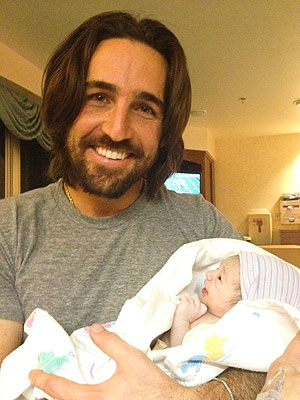Unboxing the Kindle Fire HD 8.9
Click here to view this gallery.
[More from Mashable: Apple Now Owns the iMessage Name]
Amazon expands its tablet sights with the bigger, more powerful Kindle Fire HD 8.9. Can it compete against Apple‘s iPad?
If there’s one company that deserves credit for reigniting the iPad competitor market, it’s Amazon. Despite some bugs and an overall blah design, its 7-inch Kindle Fire was the first Android tablet that made sense to consumers who gobbled it up to help the Fire grab 50% of the Android tablet market in just 6 months.
[More from Mashable: 9 Black Friday Deals For iPhone Owners]
That tablet essentially opened the flood gates for a new set of ever-more-powerful 7-inchers from, notably, Barnes & Noble and Google. All three companies have already updated their 7-inch offerings to more powerful components and higher-resolutions screens. They’re all still running Android, though Amazon and Barnes & Noble choose to hide the Google OS behind smarter and much more consumer-friendly interfaces.
All this led Apple to finally enter the mid-sized tablet space with the iPad Mini. It’s easily the best-looking tablet of the bunch, but also $ 120 more expensive than its nearest competitor.
The more interesting development, though, is Amazon‘s (and Barnes & Noble‘s) decision to go toe-to-toe with Apple’s full-size iPad and launch the Amazon Kindle Fire HD 8.9 (in 4G LTE and WiFi-only). The move is akin to a middle weight boxer putting on the pounds to take on the Heavyweight world champion. Amazon’s Kindle Fire HD is slightly smaller (the iPad is 9.7-inches), lighter (567g vs. 625g), cheaper ($ 369 for 32 GB model vs. $ 599 for the iPad 4th Gen — Amazon subsidizes with sleep-state ads, that I do not mind) and overall somewhat less powerful. In order to win the battle, the 8.9-inch Kindle Fire HD better be pretty nimble on its feet, while able to throw that all important knockout punch.
Short version of this story: the Kindle Fire HD 8.9 does some serious damage, but the iPad 4th Gen gets the decision and retains the tablet leader title.
The Kindle Fire HD 8.9 is by no means a failure. In many ways, it’s as good as the smaller Kindle Fire HD, but throughout my tests I noticed odd bugs and glitches (which should all be fixable by software) and a somewhat disturbing lack of power that’s especially obvious when you put the Fire HD 8.9 next to the iPad 4th Gen
What It Is
If you’ve never seen an iPad and someone handed you the Kindle Fire HD .9, you’d likely say its jet-black, soft-to-the-touch plastic body felt good in your hands and was more than effective at all the core tasks (reading, game playing, e-mail, web browsing).
Design-wise, the 8.9 device looks exactly like the 7-inch model, complete with the too-hard to find volume and power buttons. There are no other physical buttons on this device, but Amazon chooses to hide the few it has by making them the exact same color as the chassis and flush with the body. Every time I use the tablet I do the “where’s the damn button” dance, rotating the Kindle Fire HD round and round until I feel the buttons (since I can barely see them).
I have applauded Barnes & Noble for putting the physical “N” home button right on the face of their Nook HD. Bravo for having the guts to do this. Amazon apparently looks at Apple’s iPad home button and thinks to have anything similar would be seen as “copying” the Cupertino hardware giant, when instead they should realize that it works, consumers like it and tablets without it are at a distinct disadvantage.
Amazon’s interface has you make do with a virtual, slide-out home button that is always available. Problem is, I found times when it wasn’t available. When I played Spider-Man and Asphalt 7, the tiny little left-had bar would disappear and I couldn’t exit the game unless I hit the sleep/power button.
The rest of the Kindle Fire HD 8.9′s body is solid and unremarkable (if you read my Kindle fire HD 7 review, then you know exactly what to expect.). Like the iPad 4th Gen, the Kindle Fire HD 8.9 has a front-facing 720p-capable camera. It’s useful for capturing video, snapping 1 Megapixel images and, probably most important, Skype video chats. Skype has built a fairly sharp-looing Kindle Fire app, though the design doesn’t fully fit the larger 8.9-inch screen. Skype just updated its Android app for better tablet viewing and hopefully, we’ll see this update hit the Kindle Fire HD 8.9 as well.
The iPad also has an HD rear-facing camera. The Kindle fire HD 8.9 does not (Barnes & Noble leave out cameras altogether)
Not Packing a Punch
As a large-screen high-resolution tablet (though iPad’s 2048×1536 retina display beats it), the Kindle Fire HD 8.9 offers plenty of attractive screen real estate for web browsing, book and magazine reading and games. But the results can be mixed. Silk, Amazon‘s custom web browser, was occasionally less than responsive and games, though, they ran well, never looked half as good as they do on the considerably more expensive iPad 4.
Granted, you can’t always find the same high-quality immersive action games on both Android and iOS, but Asphalt 7 Heat is a notable exception and it throws the performance differences between the two tablets into stark contrast. Game play is equally responsive on both platforms: the Kindle Fire HD 8.9’s accelerometer reads my moves just as well as the iPad.
The graphics on the Kindle Fire HD, however, are reduced to blobs and blocks (palm trees without distinct leaves, buildings without discernible windows) . The iPad’s quad-core graphics simply overmatch the Kindle Fire. I have never, for example, seen an iPad draw the game as I was playing, as I did when I tried out The Amazing Spider-Man.
Additionally, I experienced more than my share of crashes with games and even magazine apps like Vanity Fair.
The Good
Not everyone, however, will compare the Kindle Fire HD 8.9 to the iPad. Some will see the $ 299 entry-level price point (for the 16 GB model) and appreciate the power, flexibility and utility of this device. Like all Fire’s before it, the Kindle Fire HD 8.9 makes it easy to consume mass quantities of content. Nearly every menu option: Games, Apps, Books, Music, Videos, Newsstand, puts you just one click away from shopping for fresh content. If you have an Amazon account (and who doesn’t) your desired book, music or movie is just a click away. Plus, you can still easily store any of it locally, and worry about running out of storage space, or in the cloud, and never worry about space or accessibility—you can get to that purchased Kindle content from any Kindle app or registered Amazon device.
Watching movies on the tablet is a pleasure. I streamed a couple through Amazon Prime; they looked good on the 1920 x 1200 screen and the Dolby Stereo speakers produced sharp, loud, almost room-filling sound—an impressive feat not even the iPad can match.
The Kindle Fire HD 8.9 also includes a mini-HDMI-out port, which prompted me to connect the tablet to my 47-inch LED HDTV so we could watch Disney’s Brave. Yes, I had to get up and tap on the Kindle screen each time I wanted to pause and restart the move, but otherwise, I was pretty impressed with how the Kindle handled the task.
Obviously I yearn for an Apple Airplay-like feature on Android tablets (rumor has it one is coming), but this is the next, best thing.
There isn’t a lot to say about the Kindle Fire HD 8.9-inch interface that I did not say in the Kindle Fire HD 7 review. I will note, however, that the increased real estate makes the trademark task carousel seem almost too big. Icons for everything from your recently played Spider-Man game to magazine apps, books and Web sites all sit side-by-side-by side. Some, like book covers, look gorgeous.
Others like a broken web-page link look stupid. Worse yet, none of them have labels, which can occasionally make it hard to identify which app or task you’re looking at. I’m just not sure this interface metaphor is sustainable.
Personally I prefer either the clean consistent look of iOS, or the uber-user friendly, family-oriented Nook HD profile-based one. Amazon may want to take a hard look at those and start over.
Staying Connected
The Kindle Fire HD 8.9 is also Amazon’s first cellular-based tablet. That fact puts it even more squarely in competition with the iPad (which obviously has always had 3G models and now offers blazing fast 4G LTE ones as well on all major carriers).
Amazon’s mobile broadband plans are a little more conservative, with just the AT&T 4G LTE option (the 32 GB 4G model that I tested lists for $ 499, which is still $ 224 less than a comparable iPad 4th Gen).
In my experience, the connectivity is superfast and fairly ubiquitous. Amazon‘s $ 49 (a year) flat fee plan is attractive, but with a cap of 250MB per month of data, it’s unlikely it will satisfy the most data-hungry users. If you do need more data, users can also get 3GB and 5GB data plans directly from AT&T on the device.
At press time, Amazon had not enabled streaming video over LTE. Having it sounds nice, but even with the most generous data plans, streaming video would eat it up faster than you can say, “I’m streaming Back to the Future in HD over 4G LTE on my Kindle fire HD!”
The reality for most users is that WiFi is plentiful and you’ll be hard pressed to find a spot where you can’t connect for free or a small one-off fee. It’s the reason Barnes & Noble’s line of HD Nooks do not include a cellular option.
Review continues after FreeTime Gallery
FreeTime
Kindle HD FreeTime Start
Click here to view this gallery.
Perhaps the best new addition to the Kindle Fire family is not a piece of hardware or new component, but the new FreeTime app. Amazon put a lot of loving care into this parental control interface, but almost mucks the whole thing up by hiding the tool under an app that you have to scroll down to (or search) to find. By contrast profiles and age and content controls are baked into the Barnes & Noble Nook HD in a way that makes them impossible to ignore.
Even so, once you do access FreeTime, I think you’ll be pleased with the level of control it gives you. I added test profiles for my two children and then hand-picked every app and piece of content they could access. I was also able to block broadband mobile and even set time limits for access to content and overall screen viewing time (on a per profile basis). The set-up is a bit wonky and it bizarrely switches between landscape and profile screens, but I still applaud the effort. It would make sense for Amazon to move FreeTime into a device set-up screen. If the user has no additional family members or kids using the device, they can easily skip it.
To Buy or Not to Buy
Amazon’s expansive content and shopping ecosystem has always been a strong draw and it’s just as good in this large screen tablet as it was in the very first Kindle Fire. Still, you have to compare it with the equally strong iOS ecosystem, which is no slouch in the content shopping department. Apple doesn’t connect you as seamlessly to physical products, but there’s nothing difficult about shopping on Amazon.com via your iPad. It’s also notable that tablet competitor Barnes & Noble has added movie and TV viewing, rental and purchase.
Ultimately, all of these tablets are offering more and more of the same content options, apps, and features. The decision will likely come down to price, app selection, interface and overall ease of use. The Amazon Kindle fire HD 8.9 scores well on all of these, but does not always lead.
For the price, it’s a great value, but I want Amazon to focus on hardware and interface design for the next big update. Then, they may get my full endorsement.
This story originally published on Mashable here.
Gadgets News Headlines – Yahoo! News













